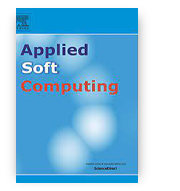The role of hexokinase and hexose transporters in preferential use of glucose over fructose and downstream metabolic pathways in the yeast yarrowia lipolytica
Piotr Hapeta, Patrycja Szczepańska, Tadeusz Witkowski, Jean-Marc Nicaud, Anne-Marie Crutz-Le Coq, Zbigniew Lazar
International Journal of Molecular Sciences
 The development of efficient bioprocesses requires inexpensive and renewable substrates. Molasses, a by-product of the sugar industry, contains mostly sucrose, a disaccharide composed of glucose and fructose, both easily absorbed by microorganisms. Yarrowia lipolytica, a platform for the production of various chemicals, can be engineered for sucrose utilization by heterologous invertase expression, yet the problem of preferential use of glucose over fructose remains, as fructose consumption begins only after glucose depletion what significantly extends the bioprocesses. We investigated the role of hexose transporters and hexokinase (native and fructophilic) in this preference. Analysis of growth profiles and kinetics of monosaccharide utilization has proven that the glucose preference in Y. lipolytica depends primarily on the affinity of native hexokinase for glucose. Interestingly, combined overexpression of either hexokinase with hexose transporters significantly accelerated citric acid biosynthesis and enhanced pentose phosphate pathway leading to secretion of polyols (31.5 g/L vs. no polyols in the control strain). So far, polyol biosynthesis was efficient in glycerol-containing media. Moreover, overexpression of fructophilic hexokinase in combination with hexose transporters not only shortened this process to 48 h (84 h for the medium with glycerol) but also allowed to obtain 23% more polyols (40 g/L) compared to the glycerol medium (32.5 g/L).
The development of efficient bioprocesses requires inexpensive and renewable substrates. Molasses, a by-product of the sugar industry, contains mostly sucrose, a disaccharide composed of glucose and fructose, both easily absorbed by microorganisms. Yarrowia lipolytica, a platform for the production of various chemicals, can be engineered for sucrose utilization by heterologous invertase expression, yet the problem of preferential use of glucose over fructose remains, as fructose consumption begins only after glucose depletion what significantly extends the bioprocesses. We investigated the role of hexose transporters and hexokinase (native and fructophilic) in this preference. Analysis of growth profiles and kinetics of monosaccharide utilization has proven that the glucose preference in Y. lipolytica depends primarily on the affinity of native hexokinase for glucose. Interestingly, combined overexpression of either hexokinase with hexose transporters significantly accelerated citric acid biosynthesis and enhanced pentose phosphate pathway leading to secretion of polyols (31.5 g/L vs. no polyols in the control strain). So far, polyol biosynthesis was efficient in glycerol-containing media. Moreover, overexpression of fructophilic hexokinase in combination with hexose transporters not only shortened this process to 48 h (84 h for the medium with glycerol) but also allowed to obtain 23% more polyols (40 g/L) compared to the glycerol medium (32.5 g/L).
DOI:10.3390/ijms22179282
Evaluation of Anthropogenic Substrate Variability Based on Non-Destructive Testing of Ground Anchors
Marek Wyjadlowski, Janusz V. Kozubal, Zofia Zięba, Dmitri Steshenko, Dariusz Krupowies
Materials
 The purpose of this paper is to describe the variability of soil rheological properties based on research carried out using load tests of ground anchors under complex geotechnical conditions. The heterogeneity of soil should always be considered when designing geotechnical constructions. In the present case, the earthwork created at the Warsaw Slope revealed an embankment of anthropogenic origin, located in a geologically and geomorphologically complex area of the Vistula valley slope. Excavation protection was anchored mainly in soils of anthropogenic origin. When the acceptance tests of the ground anchor were completed, the subsoil randomness was confirmed using nondirect, geostatistical methods. A standard solid rheological model with nonlinear fitting to the data was used. This model was established to describe the creeping activity of the ground anchor more accurately. The characteristics of man-made embankments were described using the parameters obtained with the rheological model of the subsoil.
The purpose of this paper is to describe the variability of soil rheological properties based on research carried out using load tests of ground anchors under complex geotechnical conditions. The heterogeneity of soil should always be considered when designing geotechnical constructions. In the present case, the earthwork created at the Warsaw Slope revealed an embankment of anthropogenic origin, located in a geologically and geomorphologically complex area of the Vistula valley slope. Excavation protection was anchored mainly in soils of anthropogenic origin. When the acceptance tests of the ground anchor were completed, the subsoil randomness was confirmed using nondirect, geostatistical methods. A standard solid rheological model with nonlinear fitting to the data was used. This model was established to describe the creeping activity of the ground anchor more accurately. The characteristics of man-made embankments were described using the parameters obtained with the rheological model of the subsoil.
DOI:10.3390/ma14185131
Aromatic Bis[aminomethylidenebis(phosphonic)] Acids Prevent Ovariectomy-Induced Bone Loss and Suppress Osteoclastogenesis in Mice
Anna Nasulewicz-Goldeman, Waldemar Goldeman, Anna Nikodem, Marcin Nowak, Diana Papiernik, Tomasz M. Goszczynski, Joanna Wietrzyk
International Journal of Molecular Sciences
 Osteoporosis is a skeletal disease associated with excessive bone turnover. Among the compounds with antiresorptive activity, nitrogen-containing bisphosphonates play the most important role in antiosteoporotic treatment. In previous studies, we obtained two aminomethylidenebisphosphonates—benzene-1,4-bis[aminomethylidene(bisphosphonic)] (WG12399C) acid and naphthalene-1,5-bis[aminomethylidene(bisphosphonic)] (WG12592A) acid—which showed a significant antiproliferative activity toward J774E macrophages, a model of osteoclast precursors. The aim of these studies was to evaluate the antiresorptive activity of these aminobisphosphonates in ovariectomized (OVX) Balb/c mice. The influence of WG12399C and WG12592A administration on bone microstructure and bone strength was studied. Intravenous injections of WG12399C and WG12592A bisphosphonates remarkably prevented OVX-induced bone loss; for example, they sustained bone mineral density at control levels and restored other bone parameters such as trabecular separation. This was accompanied by a remarkable reduction in the number of TRAP-positive cells in bone tissue. However, a significant improvement in the quality of bone structure did not correlate with a parallel increase in bone strength. In ex vivo studies, WG12399C and WG12592A remarkably bisphosphonates reduced osteoclastogenesis and partially inhibited the resorptive activity of mature osteoclasts. Our results show interesting biological activity of two aminobisphosphonates, which may be of interest in the context of antiresorptive therapy.
Osteoporosis is a skeletal disease associated with excessive bone turnover. Among the compounds with antiresorptive activity, nitrogen-containing bisphosphonates play the most important role in antiosteoporotic treatment. In previous studies, we obtained two aminomethylidenebisphosphonates—benzene-1,4-bis[aminomethylidene(bisphosphonic)] (WG12399C) acid and naphthalene-1,5-bis[aminomethylidene(bisphosphonic)] (WG12592A) acid—which showed a significant antiproliferative activity toward J774E macrophages, a model of osteoclast precursors. The aim of these studies was to evaluate the antiresorptive activity of these aminobisphosphonates in ovariectomized (OVX) Balb/c mice. The influence of WG12399C and WG12592A administration on bone microstructure and bone strength was studied. Intravenous injections of WG12399C and WG12592A bisphosphonates remarkably prevented OVX-induced bone loss; for example, they sustained bone mineral density at control levels and restored other bone parameters such as trabecular separation. This was accompanied by a remarkable reduction in the number of TRAP-positive cells in bone tissue. However, a significant improvement in the quality of bone structure did not correlate with a parallel increase in bone strength. In ex vivo studies, WG12399C and WG12592A remarkably bisphosphonates reduced osteoclastogenesis and partially inhibited the resorptive activity of mature osteoclasts. Our results show interesting biological activity of two aminobisphosphonates, which may be of interest in the context of antiresorptive therapy.
DOI:10.3390/ijms22179590
Analysis of the Possibility of Energetic Utilization of Biomass Obtained from Grass Mowing of a Large-Area Golf Course—A Case Study of Tuscany
Łukasz Sobol, Arkadiusz Dyjakon, Alessandro Suardi, Rainer Preißmann
Energies
 The mowing of sports fields generates a significant amount of waste biomass which requires appropriate management. On the largest scale, this problem affects golf courses with a grass surface area of up to 100 ha. Currently, the main directions for grass clippings management include composting, grass cycling, and waste. A certain alternative may be the energetic utilization of grass clippings, which not only solves the problem of organic waste management, but also brings measurable economic profits in the form of generated electricity and heat. This paper presents a techno-economic analysis of the application of a micro biogas plant, fed with grass clippings from a golf course project in Tuscany, with a grass surface of 111.21 ha. It has been shown that the annual biomass potential is 526.65 tDM∙year−1 (±45.64 tDM∙year−1), which makes it possible to build a micro biogas plant with an electric power of ca. 46 kW. The potential amount of electricity produced during the year is able to cover 16.95–37.35% (depending on the season) of electricity demand in the hotel resort, which includes two golf courses and practice facilities. The produced heat in the amount of 1388.41 GJ, in turn, is able to cover the annual heat demand in the range of 7.95–17.24% (depending on the season). In addition, the electricity and heat produced exceeds the energy expenditures for mowing, making the energy balance positive. Unfortunately, the analysis showed that the construction of a micro scale biogas plant is economically unprofitable and is characterized (in the period of 10 years) by negative IRR and ROI (−17.74% and −34.98%, respectively). However, it should be emphasized that with the additional income resulting from the avoidance of fees for the export and management of organic waste and the reduction of fertilization costs (fertilization of part of the golf course with digestate), the application of a micro biogas plant may turn out to be economically feasible (NPV > 0).
The mowing of sports fields generates a significant amount of waste biomass which requires appropriate management. On the largest scale, this problem affects golf courses with a grass surface area of up to 100 ha. Currently, the main directions for grass clippings management include composting, grass cycling, and waste. A certain alternative may be the energetic utilization of grass clippings, which not only solves the problem of organic waste management, but also brings measurable economic profits in the form of generated electricity and heat. This paper presents a techno-economic analysis of the application of a micro biogas plant, fed with grass clippings from a golf course project in Tuscany, with a grass surface of 111.21 ha. It has been shown that the annual biomass potential is 526.65 tDM∙year−1 (±45.64 tDM∙year−1), which makes it possible to build a micro biogas plant with an electric power of ca. 46 kW. The potential amount of electricity produced during the year is able to cover 16.95–37.35% (depending on the season) of electricity demand in the hotel resort, which includes two golf courses and practice facilities. The produced heat in the amount of 1388.41 GJ, in turn, is able to cover the annual heat demand in the range of 7.95–17.24% (depending on the season). In addition, the electricity and heat produced exceeds the energy expenditures for mowing, making the energy balance positive. Unfortunately, the analysis showed that the construction of a micro scale biogas plant is economically unprofitable and is characterized (in the period of 10 years) by negative IRR and ROI (−17.74% and −34.98%, respectively). However, it should be emphasized that with the additional income resulting from the avoidance of fees for the export and management of organic waste and the reduction of fertilization costs (fertilization of part of the golf course with digestate), the application of a micro biogas plant may turn out to be economically feasible (NPV > 0).
DOI:10.3390/en14175520
A time series forecasting based multi-criteria methodology for air quality prediction
Raquel Espinosa, José Palma, Fernando Jimenez, Joanna Kamińska, Guido Sciavicco, Estrella Lucena-Sánchez
Applied Soft Computing
 There is a very extensive literature on the design and test of models of environmental pollution, especially in the atmosphere. Current and recent models, however, are focused on explaining the causes and their temporal relationships, but do not explore, in full detail, the performances of pure forecasting models. We consider here three years of data that contain hourly nitrogen oxides concentrations in the air; exposure to high concentrations of these pollutants has been indicated as potential cause of numerous respiratory, circulatory, and even nervous diseases. Nitrogen oxides concentrations are paired with meteorological and vehicle traffic data for each measure. We propose a methodology based on exactness and robustness criteria to compare different pollutant forecasting models and their characteristics. 1DCNN, GRU and LSTM deep learning models, along with Random Forest, Lasso Regression and Support Vector Machines regression models, are analysed with different window sizes. As a result, our best models offer a 24-hours ahead, very reliable prediction of the concentration of pollutants in the air in the considered area, which can be used to plan, and implement, different kinds of interventions and measures to mitigate the effects on the population.
There is a very extensive literature on the design and test of models of environmental pollution, especially in the atmosphere. Current and recent models, however, are focused on explaining the causes and their temporal relationships, but do not explore, in full detail, the performances of pure forecasting models. We consider here three years of data that contain hourly nitrogen oxides concentrations in the air; exposure to high concentrations of these pollutants has been indicated as potential cause of numerous respiratory, circulatory, and even nervous diseases. Nitrogen oxides concentrations are paired with meteorological and vehicle traffic data for each measure. We propose a methodology based on exactness and robustness criteria to compare different pollutant forecasting models and their characteristics. 1DCNN, GRU and LSTM deep learning models, along with Random Forest, Lasso Regression and Support Vector Machines regression models, are analysed with different window sizes. As a result, our best models offer a 24-hours ahead, very reliable prediction of the concentration of pollutants in the air in the considered area, which can be used to plan, and implement, different kinds of interventions and measures to mitigate the effects on the population.
DOI:10.1016/j.asoc.2021.107850









